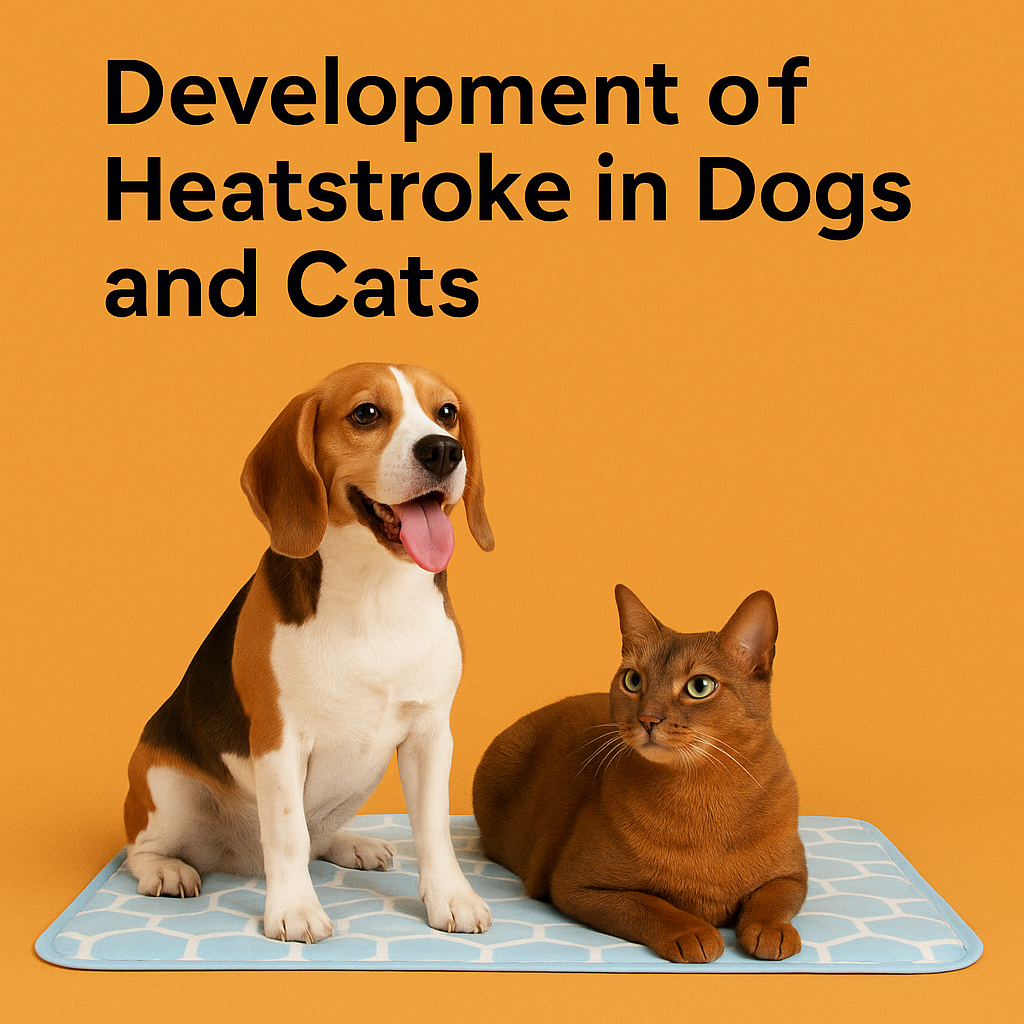Intro
Dogs and cats have varying levels of heat tolerance, and the first warm days of the year are often the most dangerous, as pets are not yet accustomed to the heat. The most important factor in preventing heatstroke is prevention. Key preventive measures include avoiding excessive exertion, ensuring adequate hydration, and keeping the animal in a cool environment.
Those most at risk of heatstroke include brachycephalic (short-nosed) breeds, elderly, young, and pets with heart conditions. Stress is also a major predisposing factor, so during summer events like competitions, extra care should be taken to cool the pet down and prevent heatstroke.
When the temperature rises high enough, the proteins in the body start to break down. The brain and heart are especially sensitive to overheating.
Most pets do not sweat like humans; panting is the primary mechanism for regulating body temperature. Panting causes fluid loss, so hydration is critical. Some heat also dissipates through the pads of the paws and large blood vessels. In cats, heat is only released through the paw pads.
The hotter the environment, the less efficiently the body can shed excess heat. Exercise or activity in hot weather further increases a pet’s body temperature, heightening the risk of heatstroke in extreme cases.
Symptoms of Heatstroke in Dogs and Cats
The symptoms of heatstroke are similar in both cats and dogs. Early signs include:
- Heavy panting
- High heart rate
- Excessive drooling
- Restlessness or stress
The animal may appear lethargic or unresponsive, and may drool excessively, vomit, or have diarrhea. The gums may turn bright red and become dry.
In more advanced cases, symptoms may progress to staggering, weakness, or even loss of consciousness, requiring immediate first aid.
First Aid for Heatstroke in Dogs and Cats
If heatstroke is suspected, start first aid immediately:
- Move the pet to a cooler location.
- Begin cooling with cool (not cold) water. Cold water may be used after the pet has adjusted.
- Use sea/lake water, wet towels, or a shower if available.
- Cats may resist getting wet, but if possible, apply cool water especially to the paws.
- You can use a fan to blow air toward the pet.
- Focus on cooling areas with little fur (belly, inner thighs) and the sides of the neck, where large blood vessels are located.
- Cooling these vessels helps deliver cooler blood to the brain, reducing protein damage.
If the pet is conscious, offer drinking water.
Measuring rectal temperature is helpful:
- Normal body temp for both dogs and cats: 38–39°C
- Dog: Above 41°C is life-threatening
- Cat: Above 40°C is very serious
If the pet is in bad shape (e.g., seizing), seek veterinary help immediately. A vet can provide IV fluids and blood tests to assess organ function. At minimum, consult a vet by phone for first aid and aftercare guidance.
Preventing Heatstroke in Dogs and Cats During Hot Weather
The best way to avoid heatstroke is to prevent it altogether.
- If your dog enjoys swimming, it’s an excellent way to cool down.
- Cats usually dislike water, so it’s vital they have access to shady resting areas.
Always ensure clean drinking water is available, even on walks. You can:
- Add ice cubes to keep it cool.
- Use flavored water (e.g., mix in tuna or treats) to encourage drinking if your dog doesn’t drink enough on their own.
There are also cooling mats, often used for dogs, that can be placed on car seats or resting areas—very helpful on cottage trips or during travel.
Avoid intense physical activity during hot weather:
- No long walks, training sessions, or rough play.
- Never leave a pet alone in a car, even in the shade—cars heat up extremely fast. If your car has temperature control, like Teslas “Dog Mode” use that when possible.
